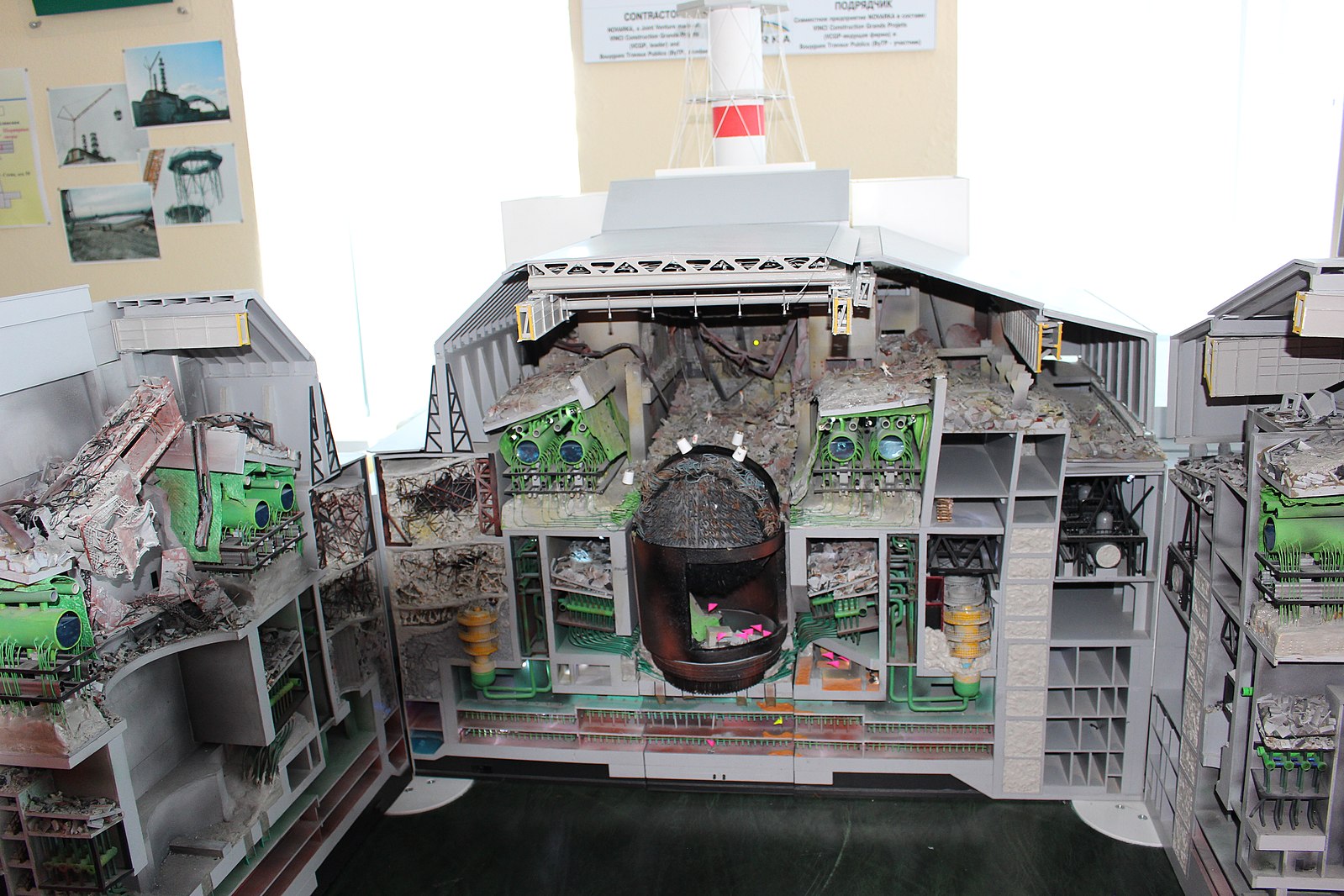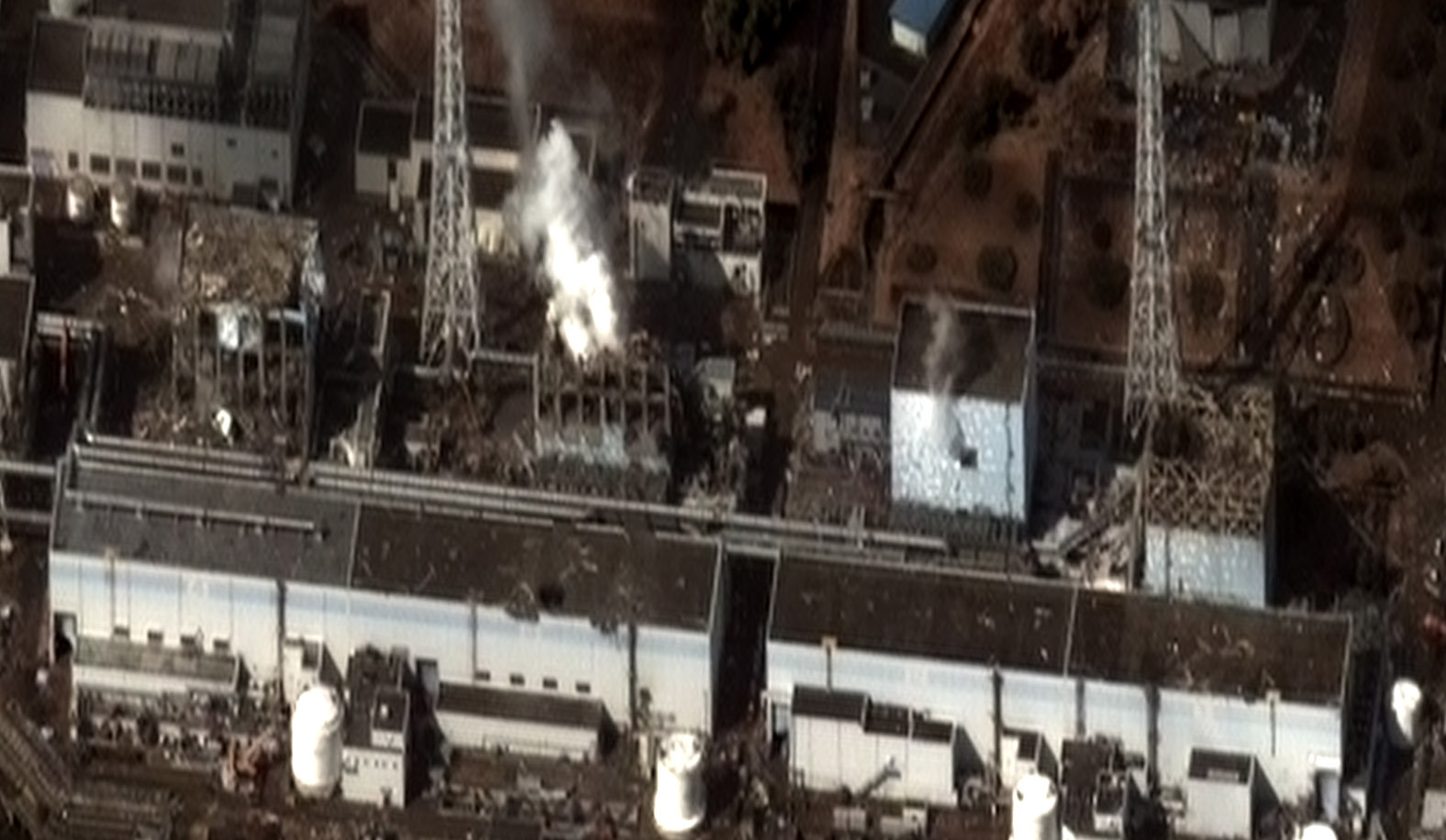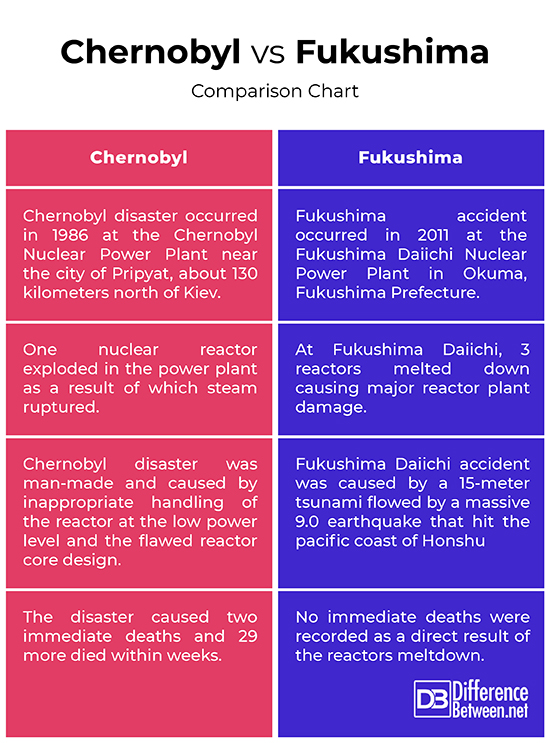Difference Between Chernobyl and Fukushima
We take a look at two of the worst nuclear disasters ever recorded in history, what caused them in the first place and the horrific aftereffects of the disaster. Both the disasters have been rated a level 7 event with widespread environmental and health effects, according to the International Atomic Energy Agency (IAEA). So, let’s take a look how the two disasters stack up.

Why Chernobyl is popular?
Chernobyl is one of the most horrific nuclear power plant disasters till date, both in terms of health and environmental impact. The Chernobyl accident occurred during a test at the Chernobyl Nuclear Power Plant in the former Soviet Union. On April 26, 1986, one of the four reactors exploded while still active, sending radioactive dust into the air. As a result, two working at the reactor died immediately and 29 more people died within weeks. Thousands of people died because of cancer and other illnesses, and more than 100,000 were evacuated immediately. The aftermath of Chernobyl accident was disastrous.

What happened in Fukushima?
Fukushima Daiichi meltdown is yet another disastrous nuclear plant accident occurred on March 11, 2011 because of a tsunami followed by a massive 9.0 earthquake that hit the pacific coast of Honshu. As a result, the main cooling system was shut down which caused a series of meltdowns and hydrogen-air chemical reactions. Although, the tsunami took more than 13,000 lives, but no direct radiation-exposure deaths were reported and around 20 or so plant workers have been suffering from minor radiation sickness, according to Japanese officials. The Fukushima accident was less disastrous compared to Chernobyl.
Difference between Chernobyl and Fukushima
Incident
– The accident in Chernobyl has been designated as one of the worst nuclear disasters in history, both in terms of impact and casualty. During a test on April 26, 1986, a huge explosion blew the roof of one of the four reactors, as a result of which the plant suffered steam rupture. Super-heated graphite and considerable amounts of radioactive particles were released into the air and dispersed across the western Soviet Union (now the country of Ukraine) and Europe. Scientists still believe it was the most devastating nuclear power plant disaster till date.
On Friday March 11, 2011 at 2:46 PM, a massive earthquake hit the pacific coast of Honshu, the main island of Japan. Less than an hour after the earthquake, a 15-meter tsunami swept over the coast and many power plants were badly affected, one in particular was the Fukushima Daiichi Nuclear Power Station. After a few seconds, the main cooling system was shut down which caused a series of meltdowns and hydrogen-air chemical reactions.
Cause
– Chernobyl was considered the worst man-made nuclear disasters of the 20th century and the most shocking thing was how the radioactive material was allowed to escape in the first place and it could have been avoided. The proximate cause of the Chernobyl disaster was inappropriate handling of the reactor at the low power level and the flawed reactor core. An improper safety test without the government approval at very low power followed by clear violations of international safety laws caused this disastrous accident, the aftermath of which still entails.
Unlike Chernobyl, the Fukushima Daiichi was not man-made but caused by a 15-meter tsunami flowed by a massive 9.0 earthquake that hit the pacific coast of Honshu, disrupting the power generators. This caused a sensor on the Unit 1 reactor to trip and after a couple of seconds, another sensor on the Unit 1 tripped. As a programmed response, the reactor shut down automatically causing a major reactor plant damage followed by meltdowns.
Aftermath
– The Chernobyl nuclear plant explosion killed two of the reactor operating staff immediately and 29 more died within weeks. It is estimated that thousands of people have died because of cancer and other illnesses in the ensuing years, according to a paper in the International Journal of Cancer. As a result, the water and soil of thousands of square miles of modern Russia, Belarus and Ukraine will stay polluted for years to come. According the United Nations report, almost 500 kilometers of area was contaminated and around 220,000 people were forced to relocate.
The Fukushima Daiichi has a relatively less disastrous impact in terms of casualty compared to the Chernobyl accident. As such, nobody died directly as an impact of the forced meltdown and hydrogen-air chemical reactions. High radioactive materials were released into the air surrounding the area. If it wasn’t for the tireless efforts of many at the Fukushima Daiichi power plant, the impact of this disaster could have been devastating and much, much worse compared to Chernobyl disaster. According to reports, around 154,000 people were relocated from the surrounding areas.
Chernobyl vs. Fukushima: Comparison Chart

Summary of Chernobyl vs. Fukushima
Undoubtedly and unfortunately, both Chernobyl and Fukushima disasters were two of the worst recorded nuclear power plant disasters in history. But according to reports, the Chernobyl disaster was far more devastating because the damage to the reactor unspooled violently and much more radioactive materials were released into the air across the western Soviet Union. The cores at the Fukushima Daiichi did not explode aggressively so as a result less radioactive materials were released. And no death was recorded as a direct impact of the meltdown. The aftermath of Chernobyl accident was disastrous, recording thousands of cancer related deaths in the ensuing years, and the long term effects on the environment are still felt.
- Difference Between Caucus and Primary - June 18, 2024
- Difference Between PPO and POS - May 30, 2024
- Difference Between RFID and NFC - May 28, 2024
Search DifferenceBetween.net :
Leave a Response
References :
[0]Mara, Wil. The Chernobyl Disaster: Legacy and Impact on the Future of Nuclear Energy. Singapore: Marshall Cavendish, 2010. Print
[1]Ingram, W. Scott. The Chernobyl Nuclear Disaster. New York, United States: Facts On File, Inc., 2005. Print
[2]Hindmarsh, Richard. Nuclear Disaster at Fukushima Daiichi: Social, Political and Environmental Issues. New York, United States: Routledge, 2013. Print
[3]Lochbaum, David et al. Fukushima: The Story of a Nuclear Disaster. New York, United States: The New Press, 2015. Print
[4]Yamashita, Shunichi and Gerry Thomas. Thyroid Cancer and Nuclear Accidents: Long-Term Aftereffects of Chernobyl and Fukushima. Massachusetts, United States: Academic Press, 2017. Print
[5]Image credit: https://commons.wikimedia.org/wiki/File:Chernobyl_Reactor_4_model_inside.jpg
[6]Image credit: https://upload.wikimedia.org/wikipedia/commons/7/7d/Fukushima_I_by_Digital_Globe.jpg
